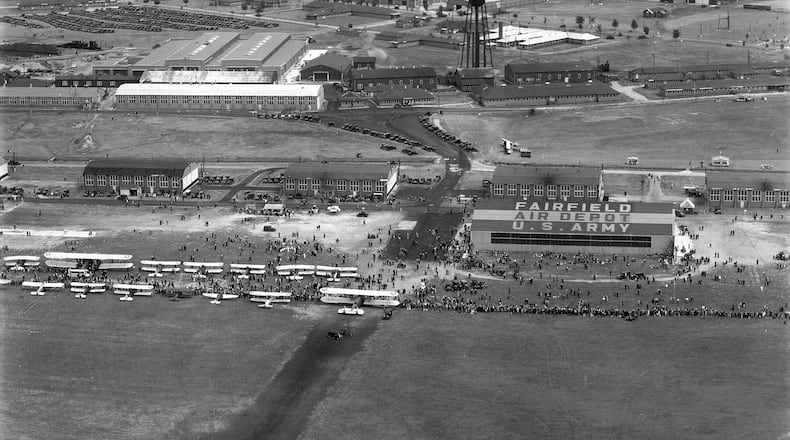The Fairfield Depot’s normal supply function included furnishing parts and equipment to repair shops and other Air Service installations. By 1927, the Fairfield Depot served all Air Service installations east of the Mississippi River, and those in a few states west of the river, as well as depots in the Panama Canal Zone, Hawaiian Islands, and the Philippines.
At various times throughout its history, it accepted additional roles. Following World War I, it took on the huge task of inventorying, discarding, and storing war surplus materiel. It also assumed responsibility for overhauling airplane engines when the Engineering Repair Section from the Aviation Repair Depot in Indianapolis moved to Fairfield in 1920. The depot established the supply system and maintenance schedule for the 1924 Round-the-World Flight, controlled the experimental Model Airway System from 1925-1926 (the first airline to provide regularly scheduled flights between fixed points), modified the airplanes used for flying the United States air mail in 1934, and installed and maintained special equipment used during exercises to perfect new bombing techniques and tactics.
The depot’s most significant contribution, however, was its role in logistics during World War II when the need for emergency maintenance, repair, and supply work skyrocketed. From the employment of 500 people in 1939, the depot expanded to more than 19,000 workers at its height in 1943. It operated 24 hours a day, seven days a week, supplying, maintaining, and repairing all types of war materiel for stateside depots and remote field depots around the world. As one of the oldest depots in the nation, Fairfield was a proving ground for new ideas to streamline the supply system and was selected to train military and civilian employees in repair and supply procedures. Through the Air Service Command, it provided expertise to the establishment, layout, and manning of new depots and sub-depots around the nation. Until the day it closed in January 1946, the depot provided the backbone of the logistics function that Air Force Materiel Command manages to this day.
This Look Back utilizes nearly 200 black-and-white photographs dating back to beginnings of the depot activities up to World War II.
About the Author

